A seedless way of growing certain varieties of tomatoes in the open field
Some varieties of tomatoes can be grown without using seedlings. There are also many ways to cultivate such tomatoes. It is not easy to grow full-fledged seedlings, therefore amateur gardeners often buy them on the market, which usually poses a certain risk of acquiring insufficient quality or the wrong variety.
The way out of this situation is a seedless way of growing tomatoes. Tomato seeds are sown directly into the ground where they are constantly growing. It should be borne in mind that by this method it is possible to grow tomatoes both in the southern regions and in a strip with a cooler climate.
Variety of planting methods
Tomatoes can have two types of bushes: very tall (indeterminate) and low (determinant). Low varieties have a tendency to grow no more than 1 meter. Its bushes have from 3 to 6 main and lateral stems, and stepchildren are usually formed on the lower part.
Indeterminate varieties can have a significant stem height. A flower raceme forms at the end of the main stem. Stepsons located in the vicinity of the main stem do not stop growing. This process continues throughout the growing season, and stops only with the onset of cold autumn days.
The height of such tomato bushes can reach more than 2 meters. However, as a rule, the intensity of the appearance of fruitful brushes and ovaries in them is much less than in undersized tomato representatives.
The description of tomatoes includes the fact that they prefer warmth. If the temperature drops to 10 degrees, then the pollen is unable to ripen and the ovaries remain without fertilization and crumble. The optimum temperature for growing tomatoes is from +21 to +25 degrees. Although plants love moisture, its excess can negatively affect the growth of bushes and the ripening of fruits.
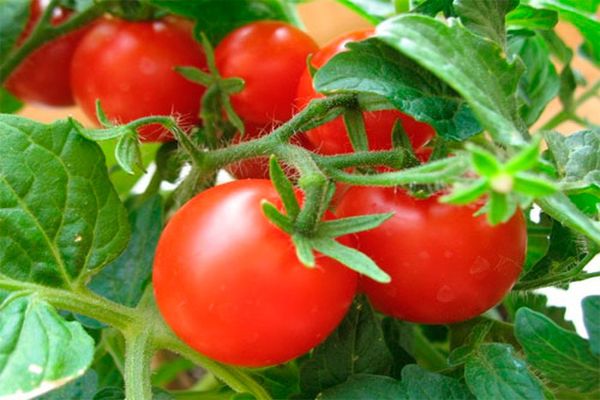
The need for a luminous flux is of great importance. If it is not enough, then the plants are extended in height, and the roots develop poorly.
Tomatoes prefer light soil with a high nutrient content, but they can also grow on other soils. The only exceptions are strongly acidic or too salty.
Characteristics and description of the variety Sprint 2
The most popular variety that can be grown in a seedless way is the Sprint 2 tomato. It does not require dressing and pinching. The weight of one fruit ranges from 50 to 80 g.
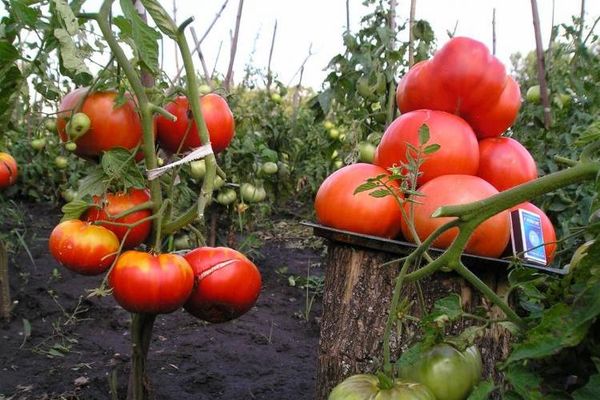
6-8 fruits ripen on one hand. Tomato Sprint can bear fruit successfully even in adverse climatic conditions. A very early ripening variety. Not affected by late blight.Seeds of this variety are sown outdoors in June. Planting schemes - staggered at a distance of 30 x 50 cm. Watering and feeding is required.
Rules for choosing a place for sowing
The tomato planting site should be correctly selected with moisture-absorbing and easily aerated soil. Clay, heavy areas are slower to warm up and tend to compaction quickly. It is impossible to expect an early harvest on such soils. In addition, close groundwater, which passes next to the root system, negatively affects the planted tomatoes.
A seedless tomato needs sufficient sunlight to grow normally. Therefore, the beds are located on the southern slopes. In this place, the soil warms up faster and better. The earliest harvest is obtained on the southeastern slopes of the site. There is less chance of spring frosts.
If the backyard has a flat surface, then it is better to plant the tomatoes in a place where there is protection from the wind, or to build a special protection. You can arrange beds near a medium-height hedge.
According to the rules of crop rotation, for tomatoes, plots are chosen on which they were previously grown:
- cucumbers;
- cabbage;
- zucchini.
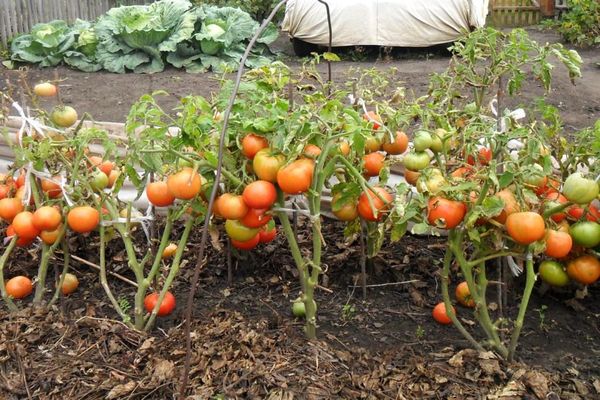
After potatoes and peppers, before planting tomatoes, it is better to withstand a two to three year gap. It is also not recommended to plant tomatoes next to the planted potatoes. Pest insects and potato diseases can also affect tomatoes.
Preparing the beds
After choosing a suitable place, they begin to prepare the beds. You can apply organic fertilizers in the fall, and in the spring the site is sprinkled with humus and ash.
Above the beds on which the seedless tomatoes will be sown, arcs are installed so that the seedlings are covered with foil on top. For small beds, you can use empty plastic bottles. Cutting them across, cover young plants.
Soil sowing
It is recommended to plant early tomatoes in small bushes in a seedless way. They are not afraid of dense plantings, it is better to place them in a checkerboard pattern at a distance of 30 cm between plants.
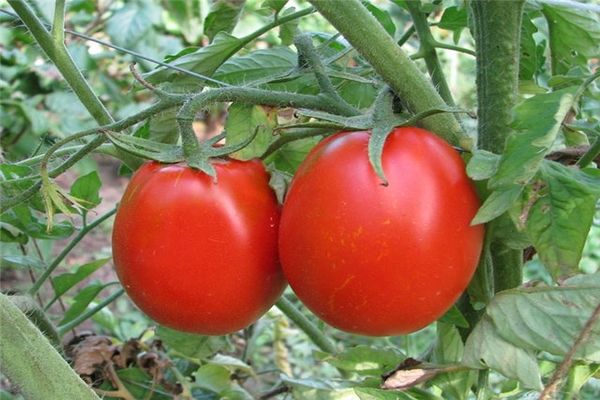
In order to provide air access to plants in the future, stepchildren should be cut off in time. You can sow up to 5 seeds in one hole and cover them with a one and a half centimeter layer of soil. After that, be sure to pour it with warm water, and cover with cut plastic bottles or glass jars. Be sure to cover the top with a film stretched over arcs.
How to grow tomatoes without seedlings
Planted plants, until the seedlings germinate, it is better not to disturb. When sunny and warm weather is established, the film can be slightly opened for the daytime.
After germination, excess tomato plants are removed from the hole, leaving 2 plants each. If necessary, they can be transplanted to another location. Watering of tomatoes grown in a seedless way is carried out in smaller quantities. Since the central, main root grows deep into the ground, and it is not disturbed by transplants when diving, it is able to extract moisture from the lower soil layers. These plants should be watered only during prolonged dry weather.
Of course, growing tomatoes in a seedless way also has its drawbacks:
- this method can only be used for early maturing varieties:
- due to the low temperature, the first ripe tomatoes may appear 2 weeks later than those planted with seedlings.
Even despite the fact that in the open field, planting of tomatoes with seeds is carried out 1.5 months after the seeds are planted to obtain seedlings, such bushes quickly catch up with them in development.
The need for feeding
After more than 2 true leaves have appeared on the plant, the first feeding is carried out.1.5 g of ammonium nitrate is added to a liter can of water. One plant will need 0.5 liters of this solution.
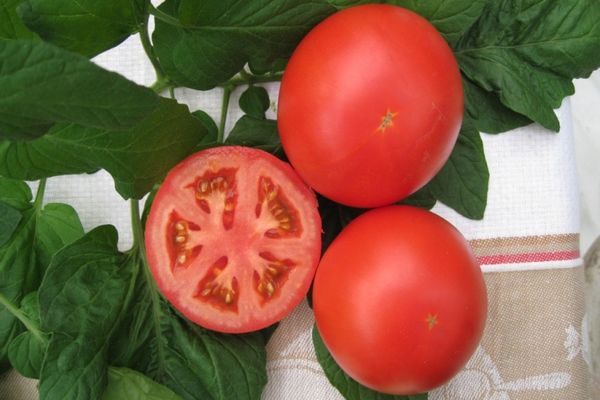
The next fertilization is done after the ovary appears. In this case, superphosphates (20 g) and potassium chloride (10 g) are used. This time, a furrow with a depth of about 7 cm is made near the plants. It is made at a distance of 15 cm from the stem, and a mixture of fertilizers is poured into it. This top dressing can be replaced with a mullein, previously diluted with water in a ratio of 1/10. In September, you can cover the soil with straw or sawdust.
Summer and autumn harvest
Since the grown tomatoes ripen gradually, it is required to collect ripe fruits after 4 days. But during the period of mass maturation, it is carried out more often. Tomatoes, which are harvested for fresh consumption, are picked when ripe.
If you pick the not quite ripe fruits, you can accelerate the ripening of other fruits on the bush. They can turn red if spread in one layer on a dense surface. But it should be borne in mind that when ripe, the fruits release ethylene, which in turn provokes the ripening of neighboring fruits. At the end of the season, with the onset of frost, you can pick off all tomatoes at the same time, even those that are not ripe.
Reviews
Alexandra, Rostov-on-Don: This year I sowed Sprint 2 tomatoes directly into the soil. The plants were very early, the bushes were strong. They were not afraid of cool nights, as they were naturally hardened. I believe that I will use this type of sowing next year.
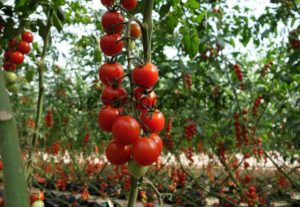
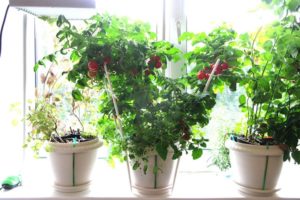








Your shamelessness has no boundaries! Sot Sprint 2 MY! Take a look at the State Register. I supplied it only to the companies Gavrish, Mars and Avista.